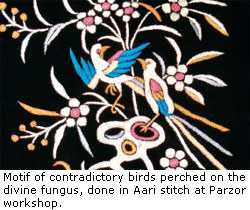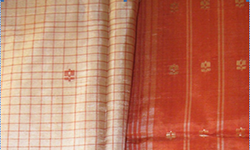
Art history/ Historiography, Crafts, Handlooms, Art
Parsi Embroidery – Reviving an Embroidered Legacy
Rawat, Shivaa
May, 2009
| Parsi Zoroastrian embroidery has become an inseparable part of traditional Indian textiles. This ancient art, which traces its origins to Bronze Age Iran, has also assimilated cultural influences from Persia, China, India and Europe. The Parsi reverence for nature is evident in the flowers - lily, lotus, chrysanthemum, and peony, trees - weeping willow, cherry, pine, bamboo and divine fungus, and birds - cranes, peacocks, swans and pheasants that adorn the embroidery. Pagodas, boats, Chinese architectural structures, human figures and scenes typical of Chinese society and daily life are also commonly depicted. Each motif carries deep meaning: for example, the divine fungus, a symbol of longevity and immortality is believed to give protection especially to children when embroidered on their jhablas/jackets. Among other motifs, trees and vegetation represent seasons, and chrysanthemums symbolize joy and represent spring. The strikingly beautiful Parsi garas sari, jhablas and ijars/pantaloons in bright reds, maroons, pinks, purples and blacks, offset by delicate embroidery in pale white and pastel shades, are works of exquisite craftsmanship that combine elegance and aesthetics. |  |
This is a preview. To access all the essays on the Global InCH Journal a modest subscription cost is being levied to cover costs of hosting, editing, peer reviewing etc. To subscribe, Click Here.



